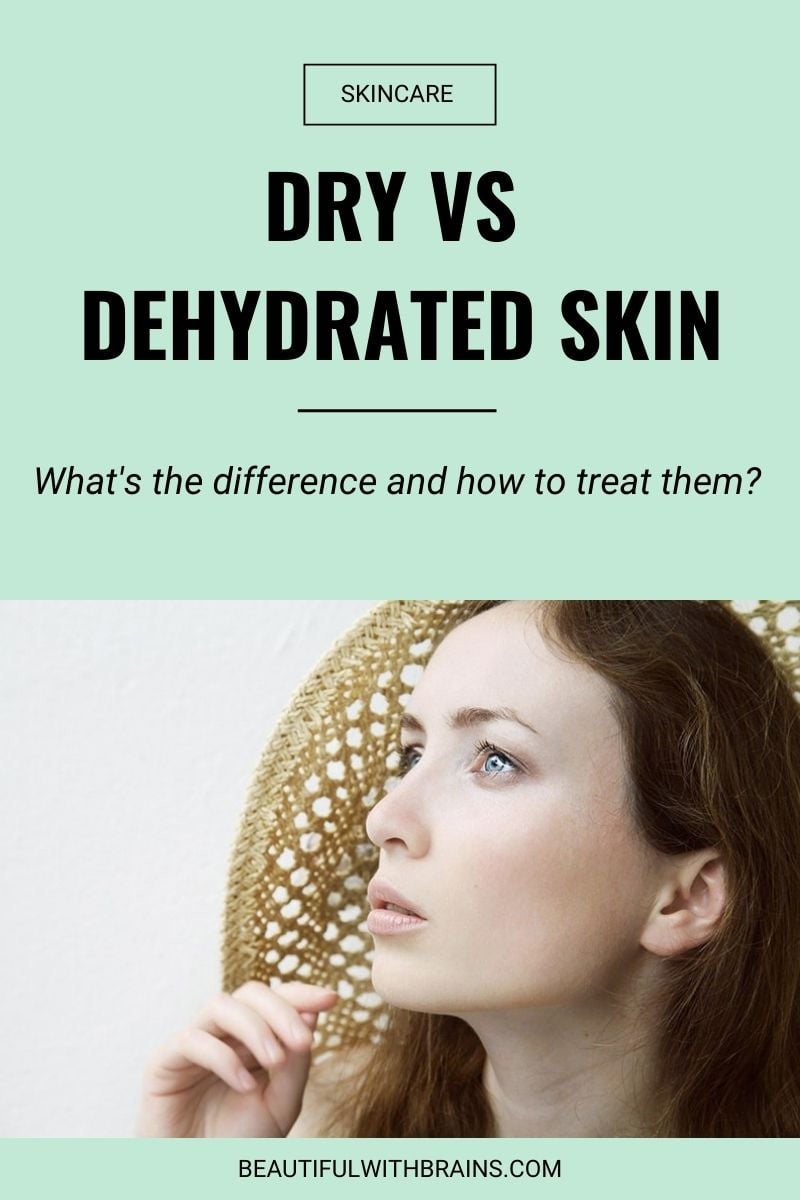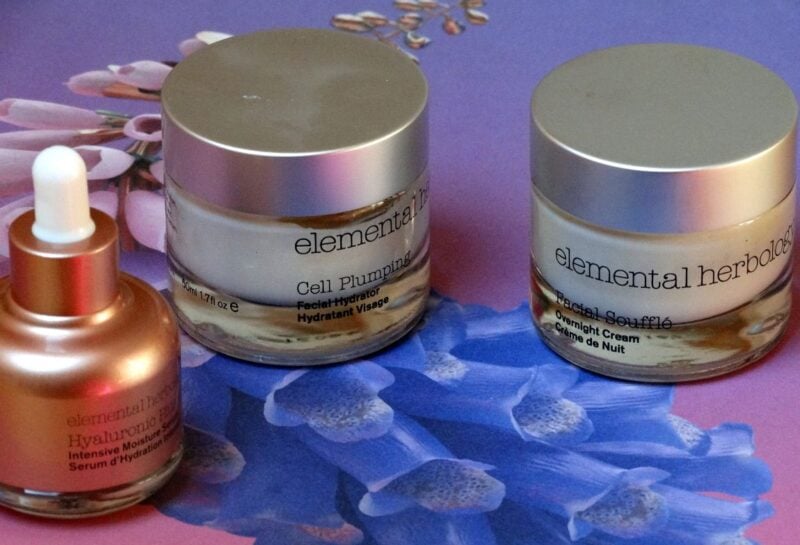
Can skin be oily AND dry at the same time?
Your skin has always been an oily nightmare. It has visible shiny patches on your forehead, gigantic pores on your t-zone and is always riddled with a pimple… or ten.
But now winter’s coming round, you’re experiencing a sense of… tightness? Worse, it has even started to flake a little.
Has your skin turned dry all of a sudden?!
Probably not. Your skin type rarely changes. But it can get dehydrated (ALL skin types can get dehydrated AT ANY TIME).
Dehydrated skin looks a lot like dry skin. They have similar causes and symptoms, but if you treat them the same way and start slathering rich moisturisers all over, you’re gonna end up with a bad case of pimples and more oil slick than you ever thought possible. Ugh.
Here’s how to tell the difference between dry and dehydrated skin and how to treat them:
What Is Dry Skin?
Dry skin is a skin type that lacks oil. It simply doesn’t produce enough.
Sebum is your skin’s natural moisturiser. Too much of it gives you pimples and turns your skin shinier than a frying pan.
But too little is bad, too. Without enough sebum, skin gets dry, feels tight all the time, and flakes like crazy.
How much oil your skin pumps out depends mostly on your genes, but weather and diet play a little part, too. Oh, and skin naturally gets drier with age as hormones, ceramides, and all that good stuff that helps skin stay healthy depletes.
You know what this means? Dry skin ain’t a temporary condition. You can definitely improve it, but it’s something you’ll likely have for a long, long time.
Struggling to create a skincare routine that nourishes dry skin and makes it soft and supple again? Download your FREE “Best Skincare Routine For Dry Skin” cheat sheet to get started. It features product recommendations + right application order.
Related: The Best Skincare Routine For Dry Skin
What Is Dehydrated Skin?
Dehydrated skin lacks water.
It’s a temporary skin condition anyone – including the oiliest of skin types! – can experience every now and then.
It happens when your skin’s protective barrier gets damaged. Water evaporates through the cracks, leading to dry and flaky patches.
What damages your skin’s protective barrier? Here are the most common culprits:
- Harsh cold weather
- Over-exfoliating
- Over-washing
- Unprotected sun exposure
Related: How To Strengthen Your Skin’s Protective Barrier (And Why It Matters)
How Can You Tell If Your Skin Is Dry Or Dehydrated?
The first step is to identify your skin type. Is it dry or oily?
| DRY SKIN | OILY SKIN |
|---|---|
| No visible oil on skin | Shiny |
| Rarely breaks out | Prone to acne, blackheads, and breakouts |
| Prone to cracking and flaking | Doesn’t crack nor flakes |
| Small, almost invisible pores | Large pores (especially in the T-zone) |
| Make-up settles into fine lines and flaky patches | Make-up slides off during the day |
| Thick moisturisers sink in quickly and provide relief | Thick moisturisers make your skin more oily and cause breakouts |
If you’re struggling with this, do a simple test:
- Wash your face with a gentle cleanser (if it makes your skin feel tight, it’s too strong).
- Wait a couple of hours. During this time, don’t do anything to your skin. Don’t even apply moisturiser. Just wait.
- After 2 hours, grab a tissue or blotting paper and pat it on your skin. If there are no oily spots on it, your skin is dry. If it’s covered in grease, it’s oily.
But… is your skin dehydrated too?
If your skin feels oily and dry at the same time, like the top layers are covered in grease but underneath it feels so tight and brittle, your skin is dehydrated.
If your skin is dry, it’s likely it’s dehydrated, too. Without enough sebum, your skin’s protective barrier gets broken down more easily and is unable to retain water in.
Related: The Best Skincare Routine For Oily Skin
What Causes Dry Skin And Dehydrated Skin?
Dry skin and dehydrated skin have a lot in common. The causes are the same, yet the treatments are different.
What causes them? Here are the main culprits:
- Air conditioning: It dries out skin.
- Alcohol-laden skincare (especially toners): Too much alcohol strips skin of its moisturising oils and makes water evaporate into thin air.
- Excessive exposure to both very cold and very hot weather (always wear sunscreen!).
- Harsh cleansers, soaps, and body washes. If your skin feels tight after cleansing, ditch them.
- Harsh physical exfoliants and over-exfoliation: Think apricot kernels or using your Foreo Luna/acids too often. You don’t want to remove ALL dead cells. That disrupts the skin’s protective barrier and leaves your skin dry, red, and sore.
- Long showers and baths. Hot water strips away your natural oils and damages your skin’s protective bar.
- Overuse of harsh active ingredients: Retinol, Benzoyl Peroxide, and L-Ascorbic Acid (to name a few) can do wonders for your skin. But when you use too much too often, they disrupt your skin’s protective barrier too. Hello, dehydration!
Related: 5 Skincare Treatments That Can Damage Skin (IF Overused)

How To Treat Dry Skin
Dry skin lacks oil. You can fix it by adding more oil into your skin. Easy, right?
Here’s what to look for in your skincare products:
- Oils, like marula, coconut, Argan, etc (you can use them in place of facial moisturisers)
- Butters, like shea and cocoa
- Ceramides
- Niacinamide
These ingredients strengthen your skin’s protective barrier and add oil back into your skin, keeping in healthy and moisturised.
While you’re at it, look for milk or oil-based cleansers that replenish moisture as they strip away dirt.
Best Picks:
- CeraVe Hydrating Facial Cleanser ($14.99): available at Dermstore, Feel Unique, Ulta and Walmart
- The Body Shop Chamomile Silky Cleansing Oil (£12.00): available at The Body Shop
- CeraVe PM Facial Moisturizing Lotion ($15.99): Available at Dermstore, Feel Unique, Look Fantastic, and Ulta
- Drunk Elephant Lala Retro Whipped Cream ($60.00): Available at Cult Beauty, Sephora and SpaceNK.
- Paula’s Choice Omega+ Complex Moisturizer ($35.00): Available at Cult Beauty, Dermstore, Feel Unique, and Paula’s Choice
- The Ordinary 100% Cold-Pressed Virgin Marula Oil (£8.10): Available at Beauty Bay, Cult Beauty and Feel Unique
- Trilogy 100% Natural Certified Organic Rosehip Oil (£19.50): Available at Feel Unique and Look Fantastic
Related: What Are The Best Facial Oils For Dry Skin?
How To Treat Dehydrated Skin
Dehydrated skin lacks water. The solution is (you guessed it) to put water back into your skin. How?
Humectants. It’s a fancy way of calling ingredients that draw moisture from the environment into your skin, helping to keep it hydrated.
The most common humectants in skincare products are:
- Glycerin
- Hyaluronic Acid
- Sorbitol
- Urea
PRO TIP: Apply your moisturiser or hyaluronic acid serum while your skin is still damp. It helps seal in moisture that little bit better.
Best Picks:
- Boscia Green Tea Oil-Free Moisturiser ($38.00): Available at Anthropologie, Dermstore, Sephora, and Ulta
- Paula’s Choice Clear Oil-Free Moisturizer ($29.00): Available at Nordstrom and Paula’s Choice
- La Roche Posay Heal B5 Hyaluronic Acid Serum (£27.75): available at Feel Unique and Look Fantastic
- Niod Multi-Molecular Hyaluronic Acid (£25.00): available at Beauty Bay and Cult Beauty
- Paula’s Choice Resist Hyaluronic Acid Booster ($34.00): available at Dermstore, Nordstrom, Paula’s Choice and Selfridges
- Laneige Water Sleeping Mask ($24.00): available at Sephora and Yes Style
Related: What Are Humectants And Why Are They Key To Supple, Glowing Skin?
The Bottom Line
Dry skin and dehydrated skin have similar causes and symptoms, but different treatments. Identify what you’re dealing with, give skin what it lacks and watch it transform.

